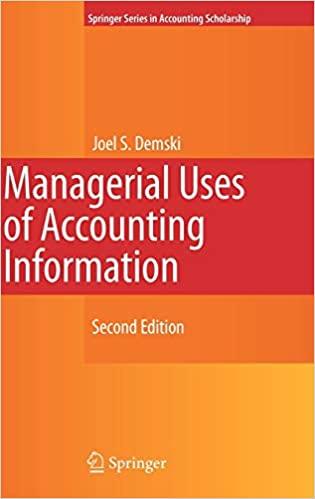15. framing with interactions31 Ralph uses many factors to produce two products, and has framed his analysis
Question:
15. framing with interactions31 Ralph uses many factors to produce two products, and has framed his analysis to focus on the two products (denoted q1 and q2) and four explicit factors. The first product sells for 38 per unit, and the second for 33 per unit. The four factors are direct labor (DL, with a price of 13 per hour), direct material (DM, with a price of 5 per pound), service one (x, with a cost of .90 per unit of service), and service two
(y, with a cost of 2.6 per unit of service). These two services provide essential service to the two products and to each other. This is also a short-run story, and Ralph has in-place two machines with respective capacities of 150 and 50 machine hours. Ralph, always clever, has transformed the problem to ignore the fixed costs associated with his fixed factors. The factor requirements are specified by the following technology constraints:
direct labor DL ≥ 2q1 + q2 direct material DM ≥ q1 + 2q2 service one x ≥ q1 + 2q2 + .1x + .2y service two y ≥ 2q1 + q2 + .3x machine 1’s capacity q1 + q2 ≤ 150 machine 2’s capacity q2 ≤ 50 Thus, each product uses one hour on the first machine, while only the second uses the second machine. Service one serves both products, itself and service two. Service two serves both products and service one.
(a) Determine Ralph’s optimal production plan, consisting of the two products and four factors. Your program should explicitly solve for all six variables, and include all of the noted constraints along with the usual non-negativity requirements. Having done this, what is the cost per unit of each product used in your program. Do these costs comport with what is likely to be reported in the accounting library? Explain.
(b) Repeat
(a) above, but now for the case where your program solves explicitly only for q1, q2, x and y.
(c) Repeat
(a) above, but now for the case where your program solves explicitly only for q1 and q2.
(d) Suppose we add another constraint: q2 ≤ 45. What is the shadow price on this constraint in each of the above three frames.
Explain.
Step by Step Answer:






